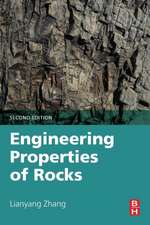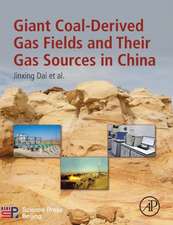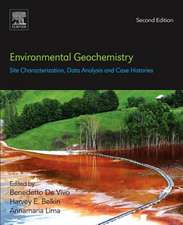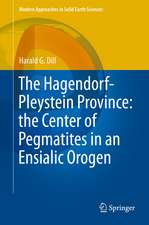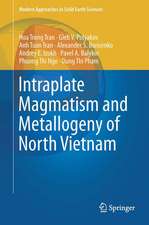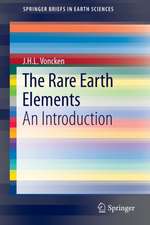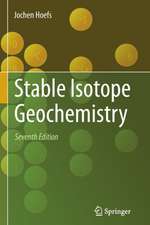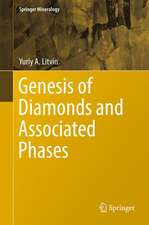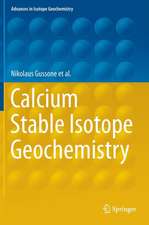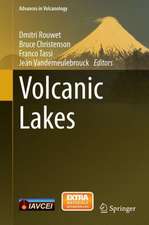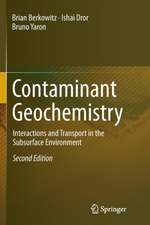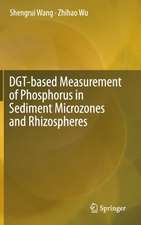Radiocarbon and Climate Change: Mechanisms, Applications and Laboratory Techniques
Editat de Edward A.G. Schuur, Ellen R.M. Druffel, Susan E. Trumboreen Limba Engleză Hardback – 27 mai 2016
| Toate formatele și edițiile | Preț | Express |
|---|---|---|
| Paperback (1) | 786.36 lei 38-44 zile | |
| Springer International Publishing – 26 mai 2018 | 786.36 lei 38-44 zile | |
| Hardback (1) | 854.43 lei 38-44 zile | |
| Springer International Publishing – 27 mai 2016 | 854.43 lei 38-44 zile |
Preț: 854.43 lei
Preț vechi: 1124.25 lei
-24% Nou
Puncte Express: 1282
Preț estimativ în valută:
163.52€ • 168.92$ • 136.09£
163.52€ • 168.92$ • 136.09£
Carte tipărită la comandă
Livrare economică 22-28 martie
Preluare comenzi: 021 569.72.76
Specificații
ISBN-13: 9783319256412
ISBN-10: 3319256416
Pagini: 250
Ilustrații: VII, 315 p. 136 illus., 127 illus. in color.
Dimensiuni: 155 x 235 x 21 mm
Greutate: 0.75 kg
Ediția:1st ed. 2016
Editura: Springer International Publishing
Colecția Springer
Locul publicării:Cham, Switzerland
ISBN-10: 3319256416
Pagini: 250
Ilustrații: VII, 315 p. 136 illus., 127 illus. in color.
Dimensiuni: 155 x 235 x 21 mm
Greutate: 0.75 kg
Ediția:1st ed. 2016
Editura: Springer International Publishing
Colecția Springer
Locul publicării:Cham, Switzerland
Public țintă
ResearchCuprins
Global Carbon Cycle Past and Present.- Discovery of Radiocarbon: The ‘Wild Bill Libby’ Story.- Theory & Applications.- Radiocarbon Nomenclature, Theory, Models, and Interpretation: Measuring Age, Tracing Source Pools, Determining Cycling Rates.- Radiocarbon Applications in the Ocean.- Radiocarbon Applications in the Atmosphere.- Radiocarbon Applications in Terrestrial Systems.- Radiocarbon and the Global Carbon Cycle Over Time.- Techniques and Tools.- Developments in Radiocarbon Technology: Measurements.- Sample Preparation for Analysis.
Notă biografică
The authors of this book are leading authorities on radiocarbon measurements, and application in the fields of ecology and earth system science. Schuur is a professor at Northern Arizona University and is an expert in terrestrial carbon cycling; Trumbore is a director at the Max Planck Institute for biogeochemistry and is an expert in terrestrial carbon cycling; Druffel is a professor at the University of California, Irvine and is an expert in ocean carbon cycling.
Textul de pe ultima copertă
This book is a useful guide for researchers in ecology and earth science interested in the use of accelerator mass spectrometry technology. The development of research in radiocarbon measurements offers an opportunity to address the human impact on global carbon cycling and climate change. Presenting radiocarbon theory, history, applications, and analytical techniques in one volume builds a broad outline of the field of radiocarbon and its emergent role in defining changes in the global carbon cycle and links to climate change.
Each chapter presents both classic and cutting-edge studies from different disciplines involving radiocarbon and carbon cycling. The book also includes a chapter on the history and discovery of radiocarbon, and advances in radiocarbon measurement techniques and radiocarbon theory. Understanding human alteration of the global carbon cycle and the link between atmospheric carbon dioxide levels and climate remains one of the foremost environmental problemsat the interface of ecology and earth system science. Many people are familiar with the terms ‘global warming’ and ‘climate change’, but fewer are able to articulate the science that support these hypotheses. This book addresses general questions such as: what is the link between the carbon cycle and climate change; what is the current evidence for the fate of carbon dioxide added by human activities to the atmosphere, and what has caused past changes in atmospheric carbon dioxide? How can the radiocarbon and stable isotopes of carbon combined with other tools be used for quantifying the human impact on the global carbon cycle?
Caracteristici
Presents an overview of the global carbon cycle and the links to climate change using current and past changes in the Earth system as an organizing principle Details the theory and measurement of radiocarbon, an isotope which exists as a unique tracer of carbon age, carbon sources, and rates of carbon cycling within ecosystems and the Earth system Provides an overview of applications of radiocarbon measurements organized around the major Earth system components: Air, Land, Water, as well as the paleohistory of these systems Summarizes laboratory techniques regarding sample collection, pretreatment, and radiocarbon measurement Includes supplementary material: sn.pub/extras

